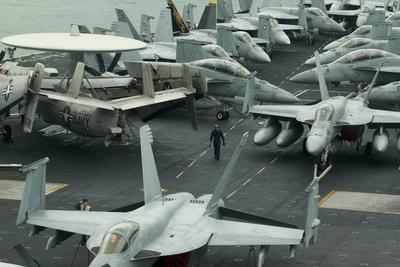After 62 years and despite an Armistice Agreement, the conflict shows no signs of ending.
The Korean Peninsula’s geopolitical importance and its alliance policies are at the core of the problem. Surrounded by China, Japan and the Russian Far East, Korea is at the centre of Asia. And so, for centuries, policy makers and generals from the neighbouring regional powers have recognised Korea’s strategic importance in the region, prioritising its protection from potential enemies.
Relations with its neighbours have typically been unfavourable for Korea. Minor political events on the peninsula have long attracted attention and hasty international reactions. For this reason, Korea has an exceptionally rich and dramatic political history, including four ‘Korean Wars’ since the 16th century.
The Imjin War (1592–98) was ‘the first Korean War’, setting the tone for future relations between the combatants. The Imjin war was precipitated by a samurai warlord, Toyotomi Hideyoshi, who intended to conquer China and dominate Asia. He set out to cross into China through the Korean Peninsula, but when Korea refused to give free passage to Japanese troops, it became a target for Hideyoshi’s marauding hordes. The Japanese marched to the Sino–Korean border before China’s Ming dynasty agreed to help Chosun Korea block Hideyoshi’s march. The combined Ming and Chosun armies finally pushed the Japanese out of the peninsula but the war tarnished the reputation of Korea’s powerful ally and destroyed much of Seoul and other parts of Korea.
The ‘second Korean War’ was, in fact, the first Sino–Japanese War (1894–95), which saw Korea becoming the primary subject of contention once again. As a newly rising power, Japan wished to protect its own interests and security by either annexing Korea or by ensuring Korea’s independence from other competitors. The Great Korean Empire was founded in 1897, in the aftermath of this ‘second Korean War’. But independent status of the country was not to last: piecemeal domestic reforms and sluggish administration made Korea an easy target for imperialist contest.
Russia’s tenuous foothold on Korea was challenged during the Russo–Japanese War (1904–05). Following this ‘third Korean War’ Japan gradually took control of Korean affairs, until 1910, when Korea formally became a Japanese colony. As such, it was forced to serve the economic and military needs of the expanding Japanese empire, but not without opposition: in the subsequent 35 years radical Korean groups continued to resist the Japanese occupation in Manchuria and China, while Korean intellectuals fought a battle against cultural obliteration at home.
The fall of Japan at the end of World War II did not lead to Korea being granted its independence immediately. The Soviet Union and the US, the allied powers who had liberated the country, believed Koreans were not yet ready for self-governance and divided the peninsula into two temporary zones of occupation. By that time the Cold War was already emerging, and this ‘temporary’ division of Korea became increasingly consolidated and ideologically cemented. This led to the creation of two antagonistic states in 1948: the Republic of Korea and the Democratic People’s Republic of Korea. The conditions for a civil conflict were ripe, and as soon as US and Russian occupying forces left the country, a new Korean war broke out.
The ‘fourth Korean War’, which started on 25 June 1950 with a surprise attack from the North against the South, was an attempt to unify the country, but soon escalated to the level of a proxy World War III, involving some 20 countries. After three years of fratricidal conflict, and despite the strong opposition from the ROK President Rhee Syngman, delegates from North Korea, China and the United Nations Command signed the Armistice Agreement on 27 July 1953. Six decades later, a peace treaty has not yet been formalised.
The first step toward ending this fourth Korean War would be for the regional neighbours to formally recognise the two Korean states. Both China and Russia have already established diplomatic and trade relations with South Korea, while continuing to provide economic aid and security assurances to keep North Korea afloat. It is now time for the US and Japan to recognise North Korea, assuage its security concerns and lift economic sanctions.
In the meantime, the Korean Peninsula remains a bone of contention among its powerful neighbours. The old system of block alliances persists in the multipolar world of the 21st century, and this is keeping Korea divided. Only when Korea frees itself from the obligations of its allies will East Asia achieve peace and stability.
Leonid Petrov is Lecturer in Korean Studies at the Faculty of Arts and Social Sciences, University of Sydney.


While many people have been unhappy with North Korea’s unruly behaviour such as its development of nuclear weapons, one of the legacies of Korean War still remains today; that is, the presence of foreign troops in South Korea, although no foreign troops have been in North Korea since shortly after the cease fire. That legacy continues to weigh in East Asia today.
Good article. Thank you.
Such a tiny country like Korea survive more than 2 thousand years of Chinese dynasties tells a lot about the peaceful nature of China. Japan has always being expansionist. Even till this day, their politicians continue to beatify the second world war by denying any massacre in Nanking. Some of them continue to pay respects to the cemetery that house 1st class war criminals.